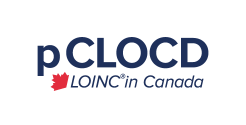Implementing the Terminology Server has significantly enhanced pCLOCD. Previously, pCLOCD has only existed as a denormalized database that presented some drawbacks, such as increased data redundancy and inconsistency, leading to data quality issues and management challenges.
As part of the Terminology Server project, pCLOCD has been transformed into a standardised FHIR form. Building a terminology as a FHIR (Fast Healthcare Interoperability Resources) Code System requires the normalization of data to ensure consistency, interoperability, and accuracy in healthcare information exchange. Data normalization involves standardizing the format and structure of data elements to align with established coding standards and terminologies, such as SNOMED CT, LOINC, or ICD.
Normalization is beneficial for several reasons, including:
- Interoperability: Normalized data allows different healthcare systems and applications to understand and use the information consistently, facilitating seamless data exchange and integration.
- Accuracy: By adhering to standardized codes and terminologies, the risk of misinterpretation and errors in data is minimized, ensuring accurate representation of clinical concepts.
- Efficiency: Normalized data supports automated processing and reduces the need for manual intervention, thus improving the efficiency of data management and retrieval.
- Quality: Standardization enhances the quality of data, making it reliable and valuable for clinical decision-making, research, and reporting.
- Compliance: Adhering to established standards and norms ensures compliance with regulatory requirements and best practices in healthcare information management.
Thus, normalization is a critical step in building a robust and effective FHIR Code System, enabling the consistent use of terminologies across different healthcare settings and applications.
1. There are a total of 39,797 records this release, up from 39,783 in . No new records have been added since the previously released version. This version will incorporate all of the applicable LOINC changes in version 2.77 as published by Regenstrief (in February 2024).
2. 38,921 records are translated to Canadian French. No new records have been translated to French, up from 38,906 in since the previously release version the last version. Note: Terms that are marked ‘Review Draft’ should be reviewed before they are used as the translation has not been previously published. Terms that are marked as ‘Complete’ have been previously published.
3. 59 96 records were modified in English for this release and are marked as R05.20.0001_2.77
a. 54 35 records are of the change type Major Minor for English changes.
b. 3 record had a change type Minor for English changes.c. 1 correction 61 corrections was made to Viewer Name.
d. 1 record was Deprecated.
4. 14 new records were added for the English version.
5. 67 100 records were modified in French for this release and are marked as R05.20.0001_2.77
a. 56 33 records are of the change type Major for the French translation.
b. 2 21 records are of the change type Minor for the French translation.
c. 7 46 records with corrections were made to Name
d. 1 correction was made to Viewer Name
e. 1 record was Deprecated.
6. 15 new records were added for the French version.
Viewer Names
7. Both languages contain a number of codes that only have changes in the other language; those are identified as ‘No Change’.
Of specific interest in this release, current implementers may want to review these changes:
New Content highlights:
New LOINC codes are added in pCLOCD solely on stakeholder requests. Infoway only adds LOINC content identified by stakeholders as being used or required, this effort allows us to uphold pCLOCD's authenticity as a true reflection of Canadian usage and requirements.For your convenience, a list of all newly published LOINC 2.77 codes is available for download. If your jurisdiction requires existing LOINC codes added to pCLOCD, please submit your request via InfoRMS.
There are edits that have been applied to pCLOCD not identified with the Interim Release Identifier. These edits ensure consistency and accuracy and include:
- Removal of whitespaces
- Corrections to pCLOCD attributes to align with pCLOCD editorial guidelines and rules. These rules are found in Section 3.1 of pCLOCD Maintenance Guide.
- Corrections to pCLOCD/LOINC content to align with LOINC TALL Man Lettering in Names. More documentation also available in section 2.1.4 Case insensitivity of LOINC user guide
15 New LOINC codes added to pCLOCD in this release includes: 11 Existing LOINC Codes and 4 new LOINC codes published in v277
Term edits highlights:
- Through LOINC's collaboration with SNOMED International, 292 "Respiratory" System concepts were updated for improved modeling and representation of the System axis. Of those 292 concepts in LOINC, 17 concepts in pCLOCD had a name change in System.
- Work continues on the semi-quantitative clean-up project initiated by the LOINC Laboratory Committee in 2023. The semi-quantitative (SemiQn) scale was reintroduced for non-continuous measurement of numeric values. This new scale option has an impact on representation of Property. In LOINC 2.77, 40 concepts that had Property value "PrThr" and Scale “SemiQn” were reverted back to Scale "Ordinal" In pCLOCD, this change impacted 32 Challenge and 5 Chemistry concepts.
- pan-Canadian French Component Name for 7 Allergy codes were updated to reflect a more accurate translation
- .
Questions and feedback welcome, contact us
